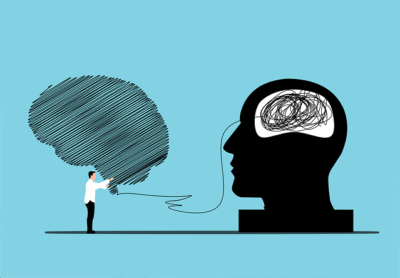social anxiety affects millions worldwide, so understanding its nature—and how it contrasts with simple isolation—can empower anyone to take practical steps toward better mental health. Have you ever felt your heart race at the thought of speaking up, yet wondered if you simply prefer solitude? By the end of this multipart guide, you’ll learn how to recognize, manage, and reduce social anxiety, while also addressing isolation’s unique challenges.
Table of contents
- 1. What Is Social Anxiety?
- 2. How Does Social Anxiety Develop?
- 3. What Are Social Anxiety Symptoms?
- 4. Which Behaviors Manifest Social Anxiety?
- 5. How can someone treat social anxiety?
- 6. What is social isolation?
- 7. How does social isolation develop?
- 8. What symptoms and behaviors mark social isolation?
- 9. What key differences distinguish social anxiety from social isolation?
- 10. What innovative approaches tackle social anxiety and isolation?
- 11. What myths mislead people about social anxiety and isolation?
- 12. How can you integrate these insights now?
- Conclusion
1. What Is Social Anxiety?
First, let’s clarify what social anxiety entails—and how it differs from mere shyness.
- Definition and Scope
social anxiety occurs when a person experiences intense fear or worry about social situations, particularly those involving potential judgment. Therefore, someone with social anxiety might dread ordering food in public, speaking at meetings, or even making small talk—because they expect negative evaluation. - How It Feels
- Heart pounds and palms sweat.
- Thoughts spiral: “They’ll think I’m stupid.”
- Voice trembles or mind blanks during conversation.
- Key Point
While everyone faces awkward moments, individuals with social anxiety find these intense fears persistently interfering with work, school, or relationships. - Practical Takeaway
To identify social anxiety, ask yourself: “Do I avoid events even when I really want to attend?” If you answer “yes,” you may face more than simple introversion.
2. How Does Social Anxiety Develop?
Next, understanding how social anxiety takes root helps you address it at its source.
- Genetic and Biological Factors
Studies show that social anxiety often runs in families. Specifically, researchers at the University of Michigan found that about 30% of variance in social fear stems from genetics¹. Moreover, heightened amygdala activity—the brain’s “threat detector”—can predispose someone to worry about social evaluation. - Early Life Experiences
- Bullying or Criticism: Children who face harsh comments at school often internalize fear of judgment.
- Overprotective Upbringing: Parents who shield too much may inadvertently teach children that the world is unsafe.
- Learned Behaviors
Furthermore, observing a caregiver’s nervousness in social settings can teach children to mimic that anxiety. Therefore, modeling calm social interaction can serve as one of the first steps in reversing these patterns. - Action Step
Keep a social journal: Note situations where you felt most anxious, then track any recurring patterns—this practice reveals triggers you can gradually expose yourself to (covered in Section 5).
3. What Are Social Anxiety Symptoms?
Recognizing the signs of social anxiety empowers you to act before avoidance takes hold.
- Physical Symptoms
- Rapid heartbeat and chest tightness
- Sweating hands or blushing
- Shaking voice or trembling limbs
- Emotional and Cognitive Signals
- Persistent fear of embarrassment
- Overanalysis of past interactions (“I should’ve said…”)
- Catastrophic thinking (“If I stutter, they’ll hate me.”)
- Behavioral Indicators
- Avoiding eye contact
- Declining invitations to social events
- Staying silent or sticking to the walls at gatherings
- How to Track Symptoms
Use a simple chart: DateSituationSymptomIntensity (1–10)Apr 15, 2025Group presentationVoice trembling, blushing8Apr 20, 2025Coffee with colleaguesHeart racing6 This log clarifies your most challenging scenarios so you can target them in exposure exercises.
4. Which Behaviors Manifest Social Anxiety?
Beyond symptoms, specific actions reveal social anxiety in daily life.
- Safety Behaviors
- Rehearsing what to say in the mirror
- Avoiding voluntary participation in discussions
- Over-preparing to mask fear of slipping up
- Negative Self-Talk
People often use harsh inner dialogue: “I’ll make a fool of myself,” which, in turn, increases physiological arousal—thus creating a self-fulfilling prophecy. - Escape and Avoidance
Importantly, escaping early from gatherings or avoiding events altogether deprives you of corrective experiences—moments that could disconfirm feared outcomes. - Actionable Strategy
- Identify a safety behavior each week.
- Replace it with a small risk: if you usually prepare five questions before a meeting, try preparing one—and allow yourself to pause if you feel stuck.
5. How can someone treat social anxiety?
To overcome social anxiety, one needs a clear roadmap—step by step—that tackles both mind and behavior. Below are proven approaches and how you can apply them.
5.1 What steps does Cognitive Behavioral Therapy (CBT) involve?
- Identify negative thoughts
- Start by noticing automatic beliefs such as “I’ll embarrass myself.”
- Therefore, write down each anxious thought when it arises.
- Challenge and reframe
- Ask yourself: “What evidence supports this fear?”
- Then, replace it with balanced statements: “Even if I stumble, people will understand.”
- Behavioral experiments
- Plan a small risk (e.g., ask a stranger for the time).
- Observe outcomes, record them, and compare with your initial fear.
- Homework assignments
- Commit to daily exposures.
- For instance, week one: make eye contact; week two: share an opinion in a small group.
5.2 How does exposure therapy reduce fear?
- Gradual confrontation
- First, visualize the feared scenario until anxiety drops by half.
- Next, role-play with a trusted friend.
- Finally, face the real situation.
- Action plan example WeekTaskGoal1Speak up in a one-on-one conversationReduce anxiety from 8/10 to 5/102Join a small group discussionBuild confidence in speaking publicly3Give a short presentation to acquaintancesSolidify progress and normalize feedback
5.3 When do medications help?
- Selective Serotonin Reuptake Inhibitors (SSRIs)
- Many clinicians prescribe SSRIs to ease baseline anxiety.
- However, you still need therapy to tackle thought patterns.
- Beta-blockers for performance situations
- Take before a meeting or presentation to calm physical symptoms.
- Use sparingly and under medical guidance.
5.4 What self-help practices support recovery?
- Mindfulness and breathing
- Practice diaphragmatic breathing: inhale for four counts, exhale for six.
- Therefore, quiet your mind and interrupt the anxious cycle.
- Social skills training
- Join a local Toastmasters chapter or online social-skills group.
- In addition, role-play common scenarios (introductions, small talk).
- Self-guidance books
- Use workbooks like “Overcoming Social Anxiety: Step by Step.”
- Follow exercises two to three times per week.
- Peer support
- Share experiences in forums or support groups.
- Then, celebrate small wins—for example, speaking up once this month.
6. What is social isolation?
Unlike social anxiety, social isolation involves a tangible lack of social connections—rather than fear of them. But how does it manifest, and why does it matter?
- Core definition
You experience isolation when your actual social network shrinks below a healthy level—whether by choice or circumstance. - Real-world example
Consider seniors living alone: even if they feel calm in social settings, they still risk isolation from limited interactions. - Key point
Therefore, isolation hinges on quantity of contact, whereas social anxiety hinges on quality and comfort in contact.
7. How does social isolation develop?
Multiple forces can drive you—or others—toward isolation. Understanding these sources equips you to reverse the trend.
7.1 Which life events trigger isolation?
- Major transitions such as moving cities or retiring
- Health challenges like chronic illness or disability
- Loss from the death of friends or family
7.2 What societal factors contribute?
- Digital displacement
- Overreliance on online chats replaces face-to-face meetings.
- Moreover, algorithms can create echo chambers that exclude new connections.
- Urban design
- Gated communities or high-rise apartments may lack shared spaces.
- Consequently, neighbors pass without greeting.
7.3 How do personal traits matter?
- Introversion vs. isolation
- Introverts recharge alone but still maintain meaningful ties.
- In contrast, isolation leaves you without chosen or casual support.
- Life skills
- Low confidence in making plans can lead to fewer invitations.
- Therefore, consider learning event-planning basics (dates, venues, simple invites).
8. What symptoms and behaviors mark social isolation?
Detect social isolation early by recognizing these signs and actions.
8.1 What emotional signals appear?
- Persistent loneliness even when desired social opportunities exist
- Feeling invisible or unvalued by peers
- Low mood without clear cause
8.2 Which behaviors confirm isolation?
- Minimal social activity
- Skip family dinners or community events despite interest.
- Limited communication
- Send messages rarely; reply slowly or not at all.
- Neglected relationships
- Let friendships fade without effort to reconnect.
8.3 How to track your social contact?
- Social calendar
- List each week’s social intentions (coffee with a friend, walk in the park).
- Next, mark completed and missed events to identify gaps.
9. What key differences distinguish social anxiety from social isolation?
Below is a concise comparison that shows how each condition stands apart—and what to target in treatment.
| Feature | Social Anxiety | Social Isolation |
|---|---|---|
| Core issue | Fear of judgment in social settings | Lack of actual social connections |
| Primary mechanism | Internal worry cycling | External barriers or personal withdrawal |
| Typical behaviors | Avoiding speaking, using safety behaviors | Skipping events, neglecting existing relationships |
| Treatment focus | Challenging thoughts, exposure practices, skill building | Rebuilding social network, learning outreach, community engagement |
| Outcome goal | Feel calm and competent in social situations | Increase frequency and depth of social contacts |
10. What innovative approaches tackle social anxiety and isolation?
When traditional methods plateau, we turn to creative, science-driven solutions. Below, you’ll learn how each innovation functions, why it works, and how you can leverage it today.
10.1 How can Virtual Reality (VR) exposure transform treatment?
- What it involves: You step into a simulated social setting—such as a crowded café or job interview—while wearing a VR headset.
- Why it helps: VR delivers realistic practice without real-world pressure, allowing you to confront fears gradually.
- Action steps:
- Choose a platform: Use commercially available programs like Bravemind or Psious.
- Set goals: Begin with low-stakes scenarios (ordering coffee), then progress to high-stakes ones (public speaking).
- Track progress: Record anxiety levels before and after each session.
10.2 How do community labs and hyperlocal programs rebuild connections?
- What they are: Grassroots initiatives—“community labs”—invite neighbors to co-create local projects (gardens, skill swaps, pop-up cafés).
- Why they work: Shared goals spark natural conversation and collective pride, easing entry for those with social anxiety or isolation.
- Action steps:
- Scan local boards: Look for “community lab” or “skill share” events on Meetup or Facebook Groups.
- Volunteer a small task: Offer to water plants or stamp name tags—this light role builds confidence.
- Rotate roles weekly: Each week, pick a slightly bigger task (facilitating a discussion, leading a demo).
10.3 How can mobile apps support ongoing growth?
- Examples: Apps like MindShift and Woebot blend CBT techniques with reminders and chat-based coaching.
- Why they help: They deliver bite-sized exercises at your pace, reinforcing skills learned in therapy.
- Action steps:
- Download two apps and set daily check-ins.
- Complete one challenge per day (e.g., “initiate a one-sentence conversation”).
- Review progress weekly to adjust difficulty.
11. What myths mislead people about social anxiety and isolation?
Dispelling common misconceptions frees you to take real action. Read how each myth distorts reality and what the truth empowers you to do.
11.1 Myth #1: “Only shy people get social anxiety.”
- Reality: Even outgoing individuals can fear specific social tasks.
- Action: Focus on your triggers instead of labels—anyone can benefit from exposure exercises.
11.2 Myth #2: “Isolation is always voluntary.”
- Reality: Health issues, caregiving duties, or financial constraints can force isolation.
- Action: Identify systemic barriers (transport, mobility) and seek creative solutions (virtual meet-ups, ride shares).
11.3 Myth #3: “Medication alone cures social anxiety.”
- Reality: Drugs ease symptoms but don’t teach coping skills.
- Action: Pair any prescription with structured therapy or self-help workbooks for lasting change.
11.4 Myth #4: “Technology increases isolation.”
- Reality: While overuse can isolate, targeted platforms foster genuine connections (e.g., language exchange apps).
- Action: Curate your feed—join only groups that encourage meet-ups or skill exchanges.
11.5 Myth #5: “You must “fix” yourself before joining social events.”
- Reality: Learning happens in community, not in isolation.
- Action: Attend “practice circles” or support groups that welcome beginners.
12. How can you integrate these insights now?
Use this quick-start checklist to turn knowledge into tangible progress:
- Map Your Triggers: List your top three social anxiety scenarios and rate each 1–10.
- Pick One Innovation: Choose either a VR session, community lab role, or app challenge this week.
- Set Micro-Goals: Define one small, measurable task (e.g., ask a coworker about their weekend).
- Log Outcomes: Note your anxiety before/after and any surprises.
- Adjust and Repeat: Increase difficulty only when discomfort drops by half or more.
Conclusion
By blending cutting-edge tools—like VR exposure and community labs—with time-tested therapy, you’ll dismantle the barriers of social anxiety and isolation. Remember, change unfolds one small step at a time. Which step will you take today to reshape your social world?
references
- National Collaborating Centre for Mental Health (UK). 2013. Social Anxiety Disorder: Recognition, Assessment and Treatment. British Psychological Society. [NCBI Bookshelf]التكنولوجيا الحيوية
- American Psychiatric Association. 2022. Diagnostic and Statistical Manual of Mental Disorders (5th ed., Text Revision). American Psychiatric Publishing. [APA]Home
- Barnhill, J.W., MD. 2023. Social Anxiety Disorder. In: MSD Manual Professional Edition. [MSD Manual]MSD Manuals
- National Institute of Mental Health. 2022. Social Anxiety Disorder: More Than Just Shyness (PDF brochure). [NIMH]Infocenter
- National Institute of Mental Health. n.d. Social Anxiety Disorder: More Than Just Shyness (web page). [NIMH]National Institute of Mental Health
- National Health Service (UK). n.d. Social anxiety (social phobia). [NHS UK]nhs.uk
- World Health Organization. 2021. Social Isolation and Loneliness. [WHO]World Health Organization (WHO)
- Centers for Disease Control and Prevention. 2024. Health Effects of Social Isolation and Loneliness. [CDC]CDC
- National Institute on Aging. 2024. Social isolation, loneliness in older people pose health risks. [NIA]National Institute on Aging
- World Health Organization. 2021. Social isolation and loneliness among older people: advocacy brief. [WHO]World Health Organization (WHO)
- Detweiler‐Brown, H., et al. 2018. Health risks associated with social isolation in general and in older adults. PLOS ONE. [PLOS ONE]












